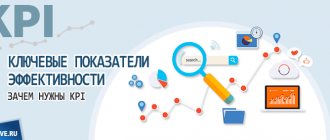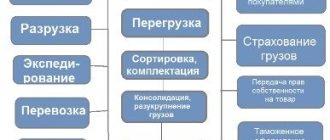What are CRM systems
CRM is an acronym. Its decoding is Customer Relationship Management, which translated into Russian means “Customer Relationship Management”.
In simple words, a CRM system is a program used by the sales department and other employees of the enterprise to improve the quality of work with customers, accounting, control and analysis of incoming calls, letters and orders.
Most even the smallest businesses have accounting software. They allow you to quickly and error-free create documents, keep records of them and generate reports to the tax service. So, a CRM system is a similar solution for the sales department.
Such a program helps managers fulfill their duties, automates many routine operations in marketing, and stores all the necessary data about the customer for further interaction with him. In turn, the manager can at any time receive up-to-date information on each order, evaluate the quality of employee work, calculate KPI indicators, and think through the further development strategy of the sales department and the business as a whole.
By and large, for some small firms, the simplest client base of several positions is enough for successful interaction with customers. And it can already be considered a CRM system if it works effectively and truly meets the needs of a specific business. But in most cases, CRM is understood as a program with a much larger set of functions than just storing names and phone numbers.
What processes does CRM automate?
The implementation of a CRM module can save thousands of hours of work for enterprise employees precisely due to the automation of internal processes. The system automates:
- Data collection - registering customer applications and orders, filling out CRM cards. Recording dialogues, calls and audio messages, quantities and composition of orders, payment methods. Calculation of the number of leads and clients, work time of managers. Collect data to analyze employee performance, advertising tools or marketing campaigns.
- Performing tasks within the enterprise - ensuring fast and secure communication between employees within the company and with external agents. Secure document flow and accounting. Convenient planning of tasks and monitoring the stages of their implementation.
- Launching mailings - automatically launching mailings through social networks, email or instant messengers using templates or ready-made scripts. Informing customers about new products or promotional programs. Send personalized offers, greetings or system alerts.
- Calendar and reminders - setting up system notifications and reminders for employees in the context of assigned tasks or processes.
- Running reports - automatic analysis and collection of statistics for standard reports. Monitoring the performance of managers, analyzing leads and transactions. Ability to configure the system to create complex reports.
Automation of sales and internal processes of the company helps reduce the burden on employees. Prevent errors made during manual entry and speed up the processing of applications. Facilitate company management, as well as provide analytics and forecasting.
Important! Automation of business processes using CRM is a mandatory step for developing a company, improving the quality of services and scaling a business.
Working with clients without CRM
Most often, working with clients in small enterprises looks like this:
- there are several managers in contact with potential and existing customers;
- applications are kept in Excel, Google Sheets or workbooks of each employee;
- This is sometimes combined into a single system, and sometimes not; at best, there is a common customer base with titles, names and contact information;
- Each manager strives to increase the number of orders he processes and does not want to share information with other employees and managers.
I worked in an advertising agency and observed this approach in practice. Each manager had his own clients with whom they interacted constantly. For a long time there was no single database of contacts. Then it was painstakingly created by forcing managers to write daily reports on work throughout the day. A separate employee was responsible for maintaining the database.
Disadvantages of this approach:
- managers waste time on reports or do not do them;
- the manager cannot obtain complete and reliable information and monitor the work of the sales department;
- there are regular disruptions in work, as a result of which customers go to competitors;
- most of the contacts are lost;
- many clients leave the company along with the manager, and the new employee has to independently learn the job and look for customers;
- Even if the contacts of the departed employee remain, then the other manager and the head of the enterprise have no idea what they talked about with the client, and at what stage the negotiations stopped.
Are you familiar with this situation? It seems to me that these are typical problems in small companies: the manager forgot to call the client back, did not send people to take measurements, did not arrange a meeting, did not prepare samples, did not transfer data to the accounting department to issue an invoice, did not control payments. But the manager has no idea about these problems and is “racking his brains” about what else to do to improve interaction with customers.
Effect of use
Note! In addition to employees, the work of managers is also made easier. They can quickly and easily monitor the execution of orders, which will allow them to devote more time to the development of the company.
The goals and objectives of the presented software are as follows:
- creation of one customer database and necessary documents throughout the company;
- reduction of time spent working with consumers;
- the ability to monitor compliance with quality and deadlines;
- reduction and distribution of employee workload using automation;
- the ability to qualitatively analyze multiple indicators;
- increase in sales volume.
results
Using CRM is quite simple; it helps you earn more money by investing less effort. This is not just a theory; the increase in company efficiency is confirmed in practice. In 2015, specialists from a consulting firm called Capterra conducted a survey of more than five hundred enterprises that use the presented system in practice. According to published data, company profits grew between 25 and 35 percent. Besides:
- preparation of documentation was accelerated;
- the number of calls to companies involved in sales has increased;
- processing of applications has been accelerated;
- costs have decreased.
Important! The presented indicators give an additional impetus to business development.
Minuses
Automated systems also have negative sides. Most often they are the result of an incorrect approach to implementation:
- technical deficiency. In the event of a breakdown or other technical malfunction, work activities are completely stopped. In order not to lose your own money and reduce downtime, you should constantly maintain and support the installed software;
How to use, appearance of the program - human factor. Quite rarely, employees want to learn something new and do not understand the positive aspects of implementation. It is necessary to carry out preparatory work and explain all the opportunities that they will be able to receive. Indicate how the system will simplify their activities.
Automation of routine actions
The CMR system used at the enterprise makes it possible to simplify the work of employees and remove the main monotonous tasks that they have to perform. For example:
- registration of a new client, request, order;
- checking value changes;
- coordinating the timing of delivery of goods, correction of problems, etc.;
- creation of document forms;
- event planning;
- organization of mailings;
- employee reminders.
Why do you need a CRM system?
You might think that CRM is just a more fashionable and modern name for a database. In fact, storing customer information is only one of the functions of such a program.
The main tasks of a CRM system can be briefly described as follows:
- Creation of a separate card for each customer, which shows the entire history of interaction: from the first contact to the present moment. This allows the manager and supervisor to know at any time what stage the negotiations are at, when to contact the client again and what information to provide.
- Deadline reminder. After each interaction, we note the date for the next step. Coming to work every day, the manager sees who needs to be contacted and what tasks to complete today, even if they were planned 2 months ago.
- Integration with IP telephony, website, SMS service and email. This allows you to save all correspondence and telephone conversations, send messages without leaving the system. You can listen to recorded conversations between employees and clients at any time.
- Interaction with other employees, for example, from the production department. A CRM system usually has the ability to set tasks for yourself and other employees.
- Automatic generation and sending by email of a commercial proposal and other important materials to the client.
- Integration with the company website, from where applications are also received to managers.
The main goal of all these functions is to ensure that the person who comes to the enterprise with a request receives all the necessary information and attention from the manager, that is, quality service, and that this new contact is not lost, but continues to bring profit to the enterprise.
What does a CRM system give to the head of a company:
- the opportunity to evaluate the quality of the sales department’s functioning and work to improve it;
- saving every incoming contact so that it does not go to competitors;
- relative independence from a specific manager who may quit or become ill;
- data for analyzing the performance of the sales department and the enterprise as a whole;
- freedom from routine tasks and constant control.
And most importantly, the practice of many companies shows that the implementation of CRM systems and, as a result, improving the quality of work with each client and recording all contacts helps to increase the total sales volume by an average of 25 - 35%.
Do I need a CRM?
A CRM system is not a panacea for business. There are a number of cases when a company will get more problems from implementation than benefits. The feasibility of implementing CRM depends on the complexity and number of work processes of the enterprise. It is also necessary to take into account the size of the client base, the number of services provided and the number of employees.
You need CRM if:
- Communication with the client is carried out using templates of phone calls, email or messages in messengers - setting up robots and a sales generator allows you to automate the processing of applications and the generation of leads for transactions. This increases the speed of data processing and improves the quality of the service provided.
- You need to set up a sales funnel or increase conversions - the CRM module allows you to set up a sales tunnel, evaluate the effectiveness of lead sources and the reasons for their losses.
- Whether optimization of work moments or implementation of complex business processes is required, automation reduces the burden on company managers and prevents errors due to the human factor. This prevents loss of leads and increases customer loyalty.
- You need a tool for analyzing the internal processes of an enterprise - a CRM module allows you to access all company statistics through reports. Thanks to this, you can determine the effectiveness of managers, sales or advertising tools used. Predict the future work of the company or eliminate current errors.
CRM is not needed if the company:
- Low sales volume per day - in the case of underdeveloped commercial activities, the implementation of a full-fledged CRM module is not economically feasible.
- Small staff - for a small team, CRM only complicates the work process and communication.
- A small number of advertising channels are used - in the absence of a full-fledged sales department, most CRM functions will remain unused.
Note! For small businesses at the development stage or micro-businesses in general, the implementation of a full-fledged CRM is extremely impractical. In this case, it makes sense to use only manual labor, or switch to free solutions. The best option is Bitrix24, which has a cloud office and a full set of CRM tools in a free plan. The only condition is that the staff should not exceed 12 people.
What problems can a CRM system not solve?
A CRM system is not a magic wand that will fulfill all the wishes of its owner. It helps to organize, systematize and automate the work of the sales department, but does not solve all the tasks and problems of the business.
For example, you should not expect that with the introduction of such a program:
- the flow of clients will increase;
- costs will decrease and profits from each sale will increase;
- customers will stop leaving for competitors;
- managers will stop taking clients away from the company - yes, the chances of retaining customers increase, but there are no guarantees;
- the climate in the team will improve;
- There will be no controversial or conflict situations with clients.
Kinds
There are different types of software.
Systems by purpose
These include:
- sales management. Performs forecasts and analyzes sales, manages contacts, calculates profit and loss;
Scheme of building relationships with the client - management of marketing activities. Analyzes the results of marketing campaigns;
- Managing customer service and call centers. Processing of requests is created, their recording and subsequent work with them.
By data processing level
They differ:
- operating rooms;
- analytical;
- collaborative.
According to the organization method
There are the following systems:
- cloudy. All data is stored on cloud storage. The name of such a SaaS system. After purchasing the software, the company pays a subscription fee and uses access through an online connection and a special application. Use is also possible on mobile devices;
- local. The information is recorded on a server that belongs to the company. The software is developed according to the customer's instructions. All changes, settings, restorations are made by customers on their own or by the developer’s specialists, but for an additional fee.
The most successful software
There is a set of free versions. The most successful are Yandex.Connect, CRM “Simple Business” and “Bitrix24”.
Paid versions have much more advanced functionality and are represented by the following systems: Megaplan, Clientbase.ru, Bitrix24.
How to understand if you need a CRM system
A CRM system will be beneficial if you work in a business where customer acquisition, order processing, and repeat interactions with customers are of great importance.
For example, a company sells:
- furniture,
- apartments,
- window,
- doors,
- sites,
- software,
- information products,
- machinery and equipment.
Provides services:
- in the field of advertising or events,
- repair, repair
- cleaning,
- health and beauty,
- car service, etc.
In all these cases, it is necessary to record incoming applications and maintain relationships with the client before and after the completion of the transaction.
CRM systems are not useful where there is no sales department as such and there is no need to keep records of clients, for example:
- in a retail store of food, clothing, cosmetics;
- in cafes and canteens, where the principle “whoever comes is the one we serve” applies;
- at an enterprise that works with several customers under long-term contracts, the capacity is 100% loaded, and the management does not plan to expand the business;
- in a business that is entirely built on acquaintances and connections, and this is the only way deals are concluded;
- in a company where the manager still manages and sells himself, although in this case at least a database, even in Excel, would definitely not hurt.
In other cases, it makes sense to think about assistants in the form of convenient programs for the operation of your enterprise.
WHAT TO CHOOSE AND HOW MUCH IT COSTS
OK. You have decided to put things in order in your business and implement CRM. A logical question arises: how much will this pleasure cost? Let's figure it out. But first I’ll answer with the “favorite” phrase of all people who work in services: “Well, it depends on the volume. We have to count.”
So. As a rule, there are 2 types of payment for using CRM (other options are rare):
- Batch . That is, types of CRM with certain functionality designed for a certain number of employees who will use it. Expanding staff, increasing customer cards and other additional functions of the CRM system, of course, for some money;
- For the number of employees. That is, payment for the number of employees who use CRM. If there are 5 of them, then pay a certain amount for each (for example, 600 rubles per month). Additional employee – additional 600 rubles per month to the general account.
Okay, we’ve sorted out the basic payment options. But we have a signature phrase: “It all depends on your appetite.” Therefore, in addition to the basic cost (if necessary), you will need to pay for additional functions and features:
- Technical support and updates. For example, when you buy a boxed version of Bitrix 24, you receive a year of technical support and updates as a gift. In the future, you will need to pay extra for further receipt of these privileges;
- Technical capabilities. You bought a boxed solution. But if employees go on business trips throughout the country, they should be able to access CRM around the clock. And for this you need dedicated servers;
- IP telephony, call tracking and end-to-end analytics. If you want to sit back and know where the needle fell, you'll have to pay extra to implement and use these features. In some cases it is free, and in some cases it is paid;
- Integration with other extensions . As a rule, most modern CRMs and services integrate well. But if you have some special solution, you will have to pay extra to the developers/programmers for the bundle.
What's the result? Let's imagine a small company. As always, a wholesale with a sales department staffed by 8 managers, the head of the sales department, accountants, operators, storekeepers and, of course, the manager.
Total 15 people. What will be the cost of implementing a CRM system on average in the market?
- The CRM itself. When paying for a package: 5490 rubles per month. When paying for an employee: RUB 7,500. per month;
- Server, MS SQL database and programmer (for the boxed version). Minimum 20,000 rub. per month;
- IP telephony + virtual PBX. From 5,000 rubles per month (but it should be that way);
- Call tracking and end-to-end analytics. 8,000 rubles per month (but not required);
- Additional integrations (1C, BEST, email tracking, etc.). About 2 thousand rubles per month;
- Additional modules (for example, warehouse management). The cost has not been determined.
The total cost of implementing a CRM system is 20+ thousand (roughly) rubles per month with a team of 15 people on the cloud version, and with the boxed version at least 40+ thousand per month (plus a one-time purchase). And voila, your business is in complete order.
Quite a reasonable expense. Of course, they can be reduced to paying for only one CRM system. Or use a free solution to avoid investments (for example, Bitrix 24 or Megaplan).
For fast bunnies. If you are serious and decide to implement the Megaplan CRM system, then use the promotional code “Megastart”. It gives you a 10% discount on everything, plus a 14-day free trial. Just tell it to the company specialist. Link for you -> megaplan.ru
Types of CRM systems
Now there are many software products, all of them strive to stand out from the competition and convince us that this is the set of functions we need. It can be difficult to figure it out right away. Therefore, first I suggest deciding on the main type of CRM system that may suit you. There are 2 of them in total:
- Saas or cloud solution.
- Stand-Alone or, in other words, a boxed version of the program.
Features of the cloud CRM system:
- the program is installed on the developer’s servers, it cannot be downloaded, like, for example, social networks, we can log into them and use ready-made tools, but not change the main blocks and functions;
- each employee of the enterprise logs into it through his personal account;
- Login to the system occurs via the global Internet; for this, a browser, mobile application or client program installed on computers in the office can be used;
- Minor customization is possible, but you cannot change the product significantly, since you do not have access to the program code.
Features of the boxed solution:
- The CRM system is installed on the enterprise server, just like, for example, we install a player for watching videos on our computer;
- you can change and modify the product, “sharpening” it to suit your tasks;
- Managers do not need to go online; a connection to the company’s internal server is enough to gain access to their personal account.
Typically, small and medium-sized businesses use cloud-based CRM systems. They are cheaper. To use a boxed solution, you need a server, that is, a very powerful computer, good protection for it and at least 1 programmer on staff to configure and troubleshoot problems.
Note: when using cloud solutions, regularly make database backups so that all information is stored not only on the developers’ server, but also on your personal account.
What should be in the program
When choosing a platform, basic knowledge of what a CRM system means is not enough. Pay attention to the technical requirements for the software product. It should contain the following functions:
- The ability to create all primary documents for an existing campaign, contacts, deal, as well as automatically generate invoices for payment.
- Integrate with telephony - when you call a client, his card opens; when communicating with a new buyer, a lead is automatically created, provided that his number is not in the database.
- Integration with mail – the company has the right to choose which mail service is convenient to use. All correspondence is saved in the database and assigned to the client card.
- Availability of your own order form or integration with the corresponding software product. This allows you to complete forms using auto-fill mode, which reduces time and reduces the risk of errors.
- The ability to record conversations with a customer or partner and store audio recordings. Information is stored in chronological order.
- Possibility of integration with accounting software products used by the company.
The choice of CRM capabilities and the determination of the tasks that it should perform are carried out at the design stage of the future system. To do this, a technical specification is drawn up, which specifies the requirements for it, taking into account the specifics of the business.
How to choose software
Different customer service programs contain different functional blocks. To understand which product to choose, you need to decide what tasks will be assigned to it and what features your business has.
For example, if you receive most of your leads in the form of incoming calls, then you should worry about integrating a CRM system with telephony, and if orders come mainly through the website, then you should choose a program that can interact with the CMS of the web resource.
First, you should think about the features of your business, and then look for products that are suitable in terms of functions and cost. If it’s difficult to solve a problem yourself or you don’t want to spend time on it, you can hire a specialist who understands the variety of modern software products. He will be able to study the specifics of the enterprise’s operation and offer the optimal solution, and, if necessary, will accompany the implementation of the system in the company.
Development of your own CRM
Another solution is to create your own CRM system with unique functionality, interface and capabilities, selected in accordance with the goals and objectives of the company.
- From the point of view of the final result, this option is the best. You choose what functions will be in your system and how they will work. You don't owe anyone anything and you can make the necessary changes at any time.
- From a financial point of view, this is the most unprofitable option. The costs of developing a custom CRM are enormous. Even space ones. If a ready-made solution costs, say, 100 thousand rubles, then developing an individual system with similar functionality will cost you 1 million or more. This is a difference of several times, and sometimes tens of times. Only really useful and unique functionality can justify such costs, without which the company cannot do without, and there is nothing like it on the CRM systems market. The time costs are appropriate. And also various bugs and improvements. It will also take some time to identify and eliminate them.
Often, development is completely frozen and shelved. The reasons are different - lack of finance, problems with the contractor, difficulties with the implementation of certain functions. A much larger number of people are involved in the development, and each of them needs to be paid. If the functionality of ready-made packaged or cloud programs is sufficient, it is better to use them. Save time, money, and nerves. Don't worry, you won't be dissuaded from the idea of creating your own CRM. On the contrary, you must be prepared for all difficulties so that the money already involved in the project is not thrown down the drain.
Examples of popular Russian-language systems
I do not set out to make a detailed review of the programs, but I only want to introduce you to popular, already proven Russian-language products and their tariff plans.
Megaplan
This is a classic cloud service in which you can store all the necessary information about clients, as well as create tasks for company employees. There is a mobile application to always have access to your personal account. The cost of use depends on the required functionality and the number of users, but there is also an unlimited package. You can test the program for free for 14 days.
Bitrix24
This is one of the most popular and well-known CRM systems in our country. It has a nice interface, somewhat reminiscent of a classic social network. Your employees will quickly figure out how to work with it, and implementation will be easier than with more specific products.
The system stores all the necessary information about customers, provides integration with telephone and mail, as well as interaction between employees, and allows the manager to receive the necessary information about the progress of the order or negotiations.
AmoCRM
Another interesting cloud solution. Unlike previous products, this CRM system is designed exclusively for sales; all other tasks can be accomplished by connecting it to third-party services and applications. The program can be integrated with a variety of information channels and software products.
FreshOffice
Unlike the previous system, this is a multifunctional solution; it links together marketing, finance, documentation, and analytics. A nice interface helps you quickly configure the necessary modules; the developer has training materials to help you get started. The product has cloud and boxed versions.
Other
If the systems described above do not suit you, I will continue this list. Here are more modern Russian-language programs:
- CRM “Simple Business”,
- Intrumnet,
- EnvyCRM,
- ClientBase API
- retailCRM,
- Pipedrive,
- Terrasoft,
- Salesap aka S2,
- WireCRM
- SugarCRM
- Gen CRM
- flowlu,
- A2B,
- Microsoft Dynamics CRM,
- Okdesk.
The most popular English-language systems:
- Zoho CRM
- Salesforce
- Base CRM.
As you understand, all these solutions are paid. If you are looking for free CRM systems, you can at least start using Google Sheets, free task schedulers and other simple programs to optimize your work. And later, you may want to install and try out more functional paid solutions.
8th place. Sales Creatio
Previously called bpm'online sales.
BPMonline is a comprehensive solution that allows you to optimize business management in three main areas: sales (full cycle management, starting with leads and ending with a finished contract), marketing (identifying customer needs and their subsequent conversion into transactions) and services (using ready-made processes to organize services ).
The system supports organizational solutions for 24 business sectors, ranging from manufacturing and services to pharmaceuticals and microfinance. The main advantages of the system are the availability of ready-made business processes, a single platform for the main areas of business and a convenient modern interface.
BPMonline sales allows you to manage sales of any complexity with equal efficiency: both short orders and long corporate transactions. Full cycle management is carried out, among other things, using ready-made solutions.
Creating sales and placing orders takes place in a few clicks; the system allows you to manage employees directly, all of whose work is transparent. Dashboards help track the pulse of sales, since the system includes a set of necessary metrics that ensure the right management decisions are made. Working with a sales funnel is easy, and transaction tactics can be adjusted on the fly.
Depending on the complexity of the sales process and company policy, there are different tariffs for the BPMonline sales product. Small companies can use the team tariff, which is ideal for long-term direct sales; the cost of use is 950 rubles per month for 1 user. The commerce tariff is used by companies with short sales cycles, its cost reaches 1,250 rubles per month, and the enterprise tariff serves as the optimal tool for medium and large companies with many different sales channels (cost - 2,500 rubles per month).
BPMonline marketing allows you to manage multichannel communications to determine customer needs. Customers are guided through all stages of the funnel, from identifying a need to transferring to sales. The system allows managers to focus only on leads that are truly ready to make a sale. In particular, lead management, client portraits, event analytics, segmentation, etc. are available. Forming a target audience and starting mailings takes place in a few clicks, and the effectiveness of nurturing and the flow of new leads (dynamics) are assessed automatically using built-in analytics tools.
The cost of the service is determined by the number of users and contacts in the database. For example, the minimum subscription cost per 1 user and 1,000 active (used for marketing activities) contacts is about 50,000 rubles.
Finally, BPMonline service provides a set of ready-made service management processes. The area is divided into customer service management (improves work automation), as well as a service center (suitable for large organizations that provide service to both clients and departments, taking into account ITIL recommendations). This area includes data management, business processes, requests, releases, etc., as well as omnichannel communications and client portraits. The cost of a customer center is 1,600 rubles per month per 1 user, and a service enterprise costs 2,850 rubles.
How to implement a CRM system in your enterprise
So, you have decided to purchase software for your sales department and have chosen a specific product. But before you start implementing it, you need to think through a strategy. As a rule, employees do not like innovations and tend to see them as a threat, so it makes sense to prepare emails in advance.
Of course, a lot depends on the character of the leader. You could be radical and one day tell managers that their every move will now be recorded and evaluated, but in my opinion this is not the best approach.
I advise you to go through this period as smoothly and smoothly as possible. Think over your actions in advance and try to attract strong managers to your side, show them the benefits of working through a CRM system, for example, freedom from reporting, drawing up individual CPs and other routine work, increasing the number of clients, and therefore sales volumes and their percentages. Then proceed to connect the program.
Briefly this process looks like this:
- Installation of a complete package or client program.
- Setting up the product, creating users with specific access rights to the system.
- Integration with website, telephony, services.
- Transfer of data already available at the enterprise into the system.
- Testing and adaptation in close contact with the software supplier.
- Employee training.
Be prepared for:
- the implementation period will be significantly delayed, usually managers count on a free test period, but most often it is not enough to implement and evaluate the operation of the software;
- dissatisfaction in the team will be present, even if you discussed everything in advance;
- you will have to study the product and discover all its features, good and bad, in the process of work, because all the nuances cannot be taken into account even in the seemingly simplest business;
- costs will increase due to maintenance costs, additional developer services, transfer of information from the old database and other seemingly trifles.
If you are determined to improve your sales team, make it more efficient, and make more money, you will get through these challenges. After 2 - 3 or 6 months, managers will get used to the new product, and a healthy working environment will return to the enterprise, and productivity and income will increase.
10th place. CRM FreshOffice
CRM FreshOffice is a multi-module system that ensures business functions in the most optimal way.
The CRM module ensures management of the entire sales cycle from creating a lead to receiving payment. The module provides complete collection of information about the counterparty with subsequent segmentation into certain categories. Omnichannel helps attract new customers from various sources, both the company website and social networks. The built-in scheduler allows you to assign tasks to team members, monitor their progress, and exercise full control over the work.
The document flow module allows you to automate the entire document flow in the company. A set of standard templates facilitates the creation of documents; the repository provides placement and downloading of any materials if necessary. The document approval system makes it easier to maintain information from managers to performers and back.
The finance module makes it possible to record transactions, analyze the financial results of campaigns, determine the current state of the company's financial account and predict potential profits.
The projects and orders module is used to control the management of projects. This provides the ability to track the status of the order at any stage of its execution.
The warehouse accounting module allows you to automate the movement of goods based on analytical data of positions. Warehouse accounting can be performed directly in the CRM system itself, as well as through integration with 1C. Visualization of products and data for all items is presented in the form of a catalog. Accounting facilitates operations for the acceptance and shipment of goods, movement, inventory, write-off or sale. At the same time, it remains possible to issue invoices in the system and reserve goods in the warehouse.
The analytical module provides automation of all statistical indicators with subsequent display of data on the screen. Along with classic indicators (new campaigns, completed tasks, income and expenses), there is sales conversion analytics, the ability to build your own sales funnel using the built-in constructor, and analysis of KPI indicators.
Telephony and mailing modules provide communication between the company and clients. Setting up a virtual PBX takes little time; it is possible to forward to responsible persons, record conversations and subsequently store data. In this case, any new unidentified call is automatically transferred to a lead. Many ready-made templates, the ability to place tags for personal requests, customize mailings and analytics make mailing quick and effective.
The cost of monthly use of the resource by one user is 550 rubles; when placing an order for a long period (1 year), the cost is significantly reduced. The cloud version has all the modules, is accessed via a web interface, and provides free online chat for the site, integration options, and a mobile application. Along with the cloud version, there is a desktop version of the product, which includes main modules, local storage and a set of interfaces. The cost of the desktop version is 12,500 rubles per 1 user, a one-time payment.
How EnvyCRM works in sales
Modern CRM systems offered by the market were made by technicians. In particular, EnvyCRM was created by developers for themselves - for the needs of six of their own enterprises operating in various fields. The development process started in 2009 and lasted seven years.
EnvyCRM is the first system that does not require prior training for managers and has a number of unique features. Working with the EnvyCRM system is very simple.
Here are the top six benefits of EnvyCRM that make 95% of a sales manager's job easier.
1. Managing a deal with buttons (maximum automation)
A push-button interface for managing the sales process allows an employee to save time on routine operations, manage to conclude more deals and generate more profit. So, a notification about a missed call is made in just a second.
You can add your own buttons for the sales process, and then only permitted actions will be available to managers.
When you click the button, a drop-down menu appears:
- For buttons of the “Undial” type – new buttons with explanations of why the call could not be reached (“Number busy”, “Number unavailable”, “Subscriber does not pick up”), each with its own logic.
- For buttons like “Invoice issued” - a window for selecting the time and date of the next contact with the client (and a hint on what needs to be done).
When the date and time of the call back are selected, CRM generates a task for the manager. Accordingly, the sales stage will change to “Invoice issued”.
It is enough to configure the logic of the buttons in the CRM system once, at the beginning of using the software. EnvyCRM will take care of everything else itself.
Options for setting up the “Dial” button:
- at the first missed call – the call is automatically rescheduled for five minutes;
- in the second - for half an hour;
- in the third - for three hours;
- with the fourth - for one day;
- at the fifth, the client goes to “Archive”.
2. The client’s time is according to his time zone
Determining customer time zones is an urgent need for companies working with customers from different regions.
How much time will a manager spend to independently find out the subscriber’s time zone? And at the same time he will be distracted from his main responsibilities.
With EnvyCRM this problem is easily solved: the current time in the client region is displayed in his profile.
Advantages of CRM systems
Demonstrating the importance of using the system
More details
3. Quickly enter date and time
In most CRM systems that salespeople work with, the time and date selection fields are designed like a calendar. You have to make several clicks to set the day and time of the next call.
In the Envy system, everything is simpler: these fields are open. In addition, the assignment of tasks in accordance with the work schedule of the sales department is controlled automatically.
4. Automatic “loading” of tasks for clients
Envy has a special mode of operation with automatic “assignment” of tasks to the manager. He himself does not choose what and when to do from a long list of tasks - the CRM tells him when it’s time to do the next urgent task, and fills the rest of his working time with processing incoming clients. This saves employees time and effort.
The task of a sales employee is to sell, and not to think about the order of tasks. Leave all the routine to a smart program.
5. The manager knows how many tasks he has for each hour
The interface for adding a task displays the number of tasks for a specific date and time for a specific manager, and he can estimate his workload in advance and choose the optimal moment to contact the client.
6. Automatic task setting!
In EnvyCRM there is actually no option to close a task manually. The task will either be closed automatically when the next one appears, or will receive the status “Refused” or “Paid” (depending on the client’s behavior).
The main thing for a manager who works in a CRM system is to outline the next step: arrange a call, video conference, or personal meeting. This reflects the essence of the sales process: moving in small steps towards the final result - a purchase. Some CRM systems are built according to a different logic, and leaving the client without the next task is allowed. In EnvyCRM this is not possible until the sale ends in a deal or a refusal.
“Classic functions of a CRM system”
Our team was thinking of recording a video about the “classic” functions of CRM systems, but we found a very good video by Mikhail Dashkiev from Business Youth, where he talked about this very well.
Let's first determine what the most important functions any CRM system must perform in order for working with it to be effective. So, the first thing we need from a CRM is for all incoming requests to be automatically unpacked within the system.
Register for the webinar “What is a CRM system”
Site tracking and lead scoring in a CRM system
Go ahead. We go deeper and get a CRM system + service for marketing automation. To do this, the system needs to have site tracking and lead scoring. These functions will allow you to create different automations and build many scenarios of customer behavior on your website.
Marketing automation editor in TimeDigital CRM
BE VERY CAREFUL HERE!
Classic systems and regular mailing services do not work in conjunction with your website. That is, user behavior on the site does not in any way affect the indicators in the CRM system. You can't automatically understand a lead's engagement rate. This is only possible with live contact with the manager. These are three different structures that live on their own:
Common use of digital services in business
In the case of a single CRM + marketing automation platform, all these 3 systems intersect, and you begin to receive common data.
Concept of using TimeDigital CRM
With Lead scoring, you can analyze lead engagement, and with site tracking, you can build personalized email messages depending on the pages viewed. You will be able to create your own scenarios and auto funnels.
Features of using CRM
In order for a CRM system to bring you benefits, you must follow the following rules when implementing it:
- Write down the business processes of your organization. Designate those responsible for each of them, this will help you distribute tasks according to performers and deadlines;
- Consider an incentive system based on CRM system data;
- Record all contacts with clients in the system;
- Monitor the execution of work;
- Train yourself and your employees not to postpone work deadlines.
And always be prepared for the following pitfalls of implementing CRM systems:
- Working with a CRM system will take time;
- Sometimes employees forget to enter data into the system or enter it incorrectly;
- You will see the shortcomings of each manager;
- Irregular control leads to a decrease in the efficiency of working with the CRM system;
- You will probably have to seek help to set up a CRM system and train employees;
- There will be those employees who will manage the database “in their own way,” do not allow this.











